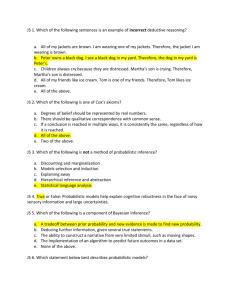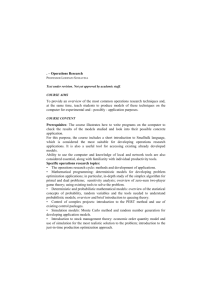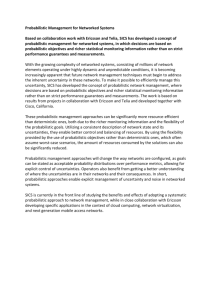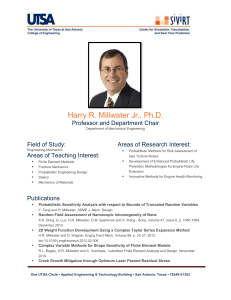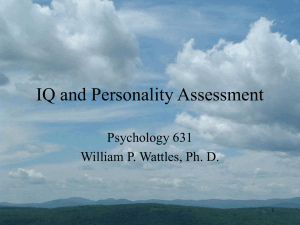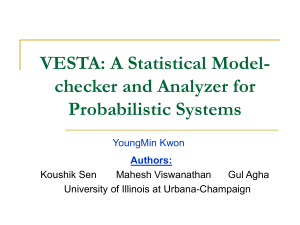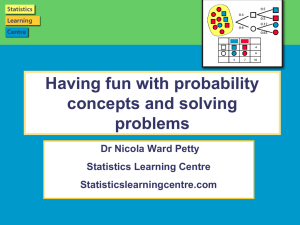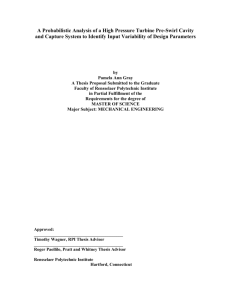Probabilistic view
advertisement
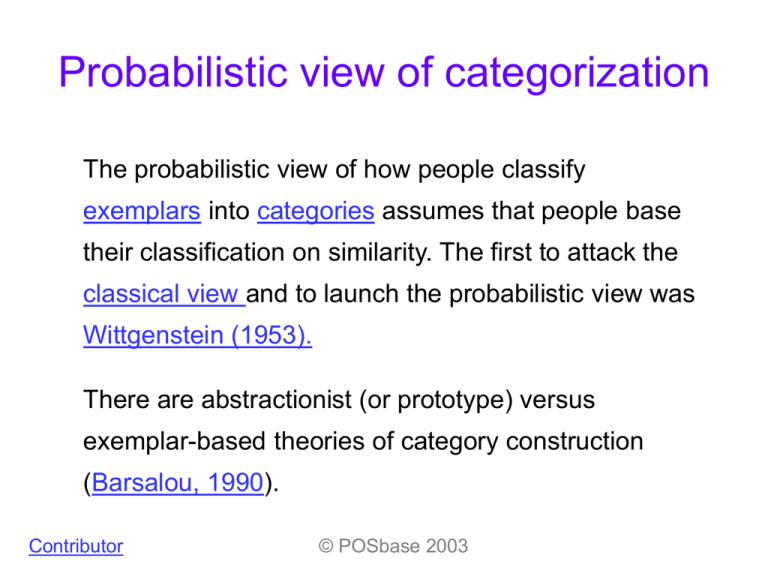
Probabilistic view of categorization The probabilistic view of how people classify exemplars into categories assumes that people base their classification on similarity. The first to attack the classical view and to launch the probabilistic view was Wittgenstein (1953). There are abstractionist (or prototype) versus exemplar-based theories of category construction (Barsalou, 1990). Contributor © POSbase 2003 Probabilistic view of categorization The probabilistic viewpoint was successful in developing measures of similarities that predicted categorization in humans. Moreover, it had some practical applications, for example in the classification of mental disorders in the Diagnostic and Statistical Manual of Mental Disorders. The 1968 version (DSM-II, American Psychiatric Association) defined depressive neurosis in the tradition of the classical view as „an excessive reaction of depression due to an internal conflict or to an identifiable event such as the loss of a love object or a cherished possession“ (p. 40). © POSbase 2003 Probabilistic view of categorization The DSM-IIIR in 1987 (and the subsequent 1994 edition) defined the same disorder in more probabilistic terms: A person needed to have a depressed mood for most of the day more days than not for at least two years. Moreover, they have at least two of a list of six additional symptoms, like insomnia, appetite loss, fatigue, low self esteem every day for at least two weeks. The only defining feature is depressed mood; three individuals suffering from depressive neurosis could share just the depressed mood, but differ in all the other symptoms. © POSbase 2003 (Source: Kunda, 1999) Probabilistic view of categorization Despite successes of the probabilistic view to overcome some of the limitations of the classical view, which assumed defining features, it had some difficulties on its own. There were problems to define and determine similarity (e.g., Taylor et al., 1978). It did not take relationships between features into consideration. For example, a bird (1) has a beak, (2) has wings, and (3) can fly. 2 and 3 are related to each other, whereas 1 is independent of both. It can not explain theory-based categorization. © POSbase 2003

